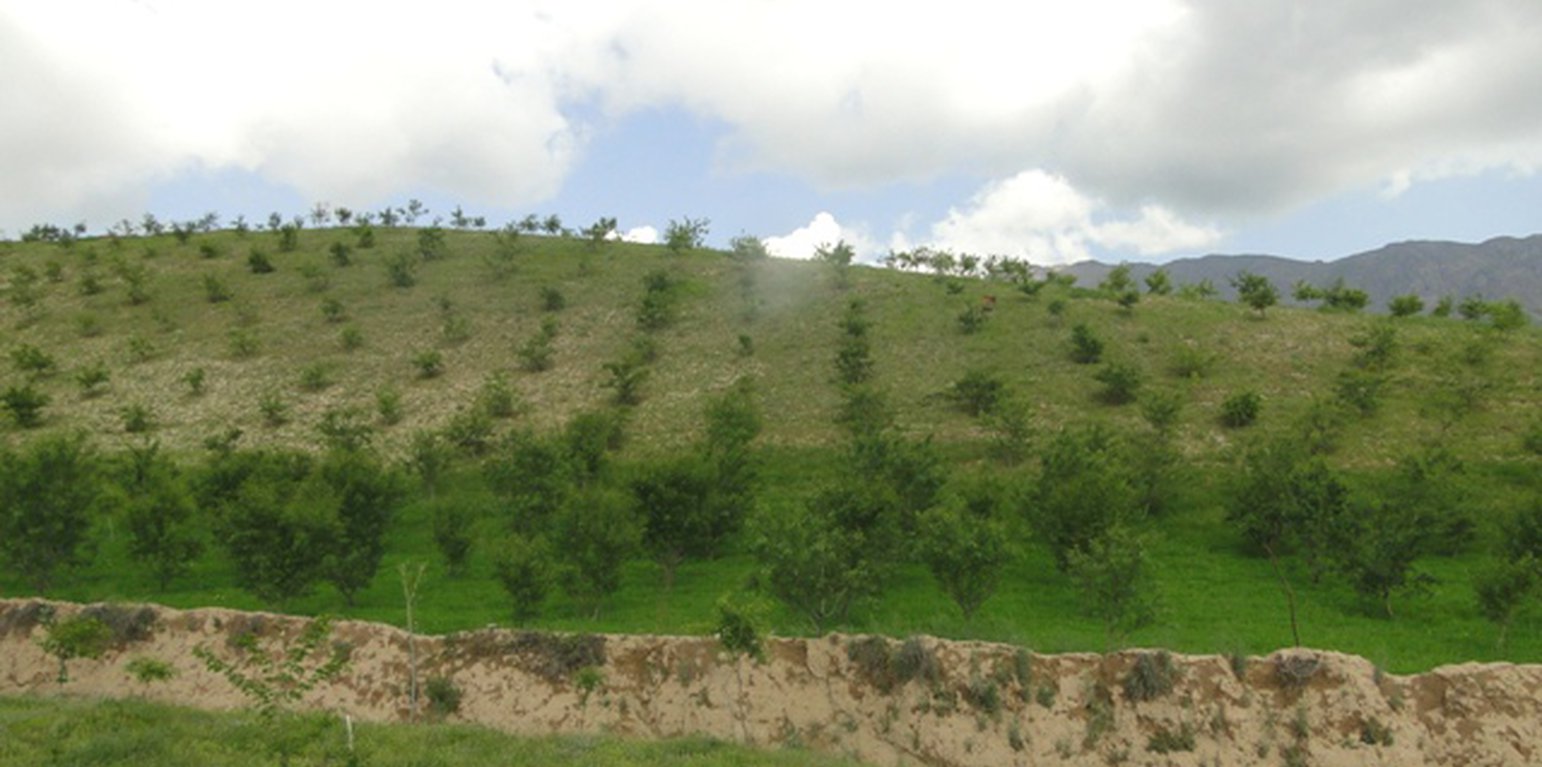



Project supported implementation of afforestation has taken place in the villages of Sari Joy, Jawaz Khana and Dashti Mirzai, located in Chokar watershed of Rustaq District in Northern Afghanistan. The Chokar watershed is a mountainous area situated between 600 and 2,500 m above sea level. The climate is semi-arid with harsh and cold weather in winter, and hot and dry summers. The annual precipitation in average years is 580 mm. Land degradation affects all forms of land use, and includes low levels of vegetation cover, severe water erosion of topsoil, and poor soil fertility. Unsustainable agricultural practices, over-exploitation and high pressure on the natural resources are adversely impacting the socio-economic well-being of local communities, as well as contributing to the risk of being adversely affected by drought - and landslides and flash foods triggered by heavy rainfall. The data used for the documentation of the technology are based on field research conducted in Chokar watershed, namely in the villages of Sari Joy, Jawaz Khana and Dashti Mirzai. These villages represent the upper, the middle and the lower zones of Chokar watershed, respectively. They differ considerably in access to services and infrastructure, but in general are poorly served. The communities depend on land resources for sustaining their livelihoods. In a good year with high yields, wheat self-sufficiency lasts about 5 months. The three villages are home to ethnic Qarluq communities. Since 2012 the Livelihood Improvement Project Takhar (LIPT) implemented by Terre des hommes (Tdh) Switzerland has initiated a range of NRM interventions
Despite the low forest cover in Rustaq, Afghanistan, local communities strongly rely on fuelwood and animal dung for cooking and heating throughout the whole year. Forests are mainly found on community land with open access to all, and there are no protection measures in place. The high demand on fuelwood for household needs places strong pressure on the remaining patches of forests and bushes, which are currently threatened by eradication. Such high demand in the area is likely to remain as there are no other alternative energy sources. The mass destruction of local forests is one of the main causes of intensive erosion, aridification, loss of topsoil and formation of gullies. Low forest cover increases vulnerability to severe rainfall and risks of landslides.
Afforestation measures in the three villages were initiated to halt the land degradation and provide sustainable firewood. The reforestation sites are largely on community land with a small share on private land. The area is characterized by hilly (16-30%) and steep (31-60%) slopes. Planting and maintaining forest in such conditions requires close support in the appropriate design of forest plots, and relevant maintenance recommendations, which can then ensure the survival of the plantation. A plot of 0.2 ha is divided into 4 m x 3 m sections. Each tree is placed in a pit of 50 cm x 30 cm with rich soil around the roots. Once the tree is planted, it is watered and covered with lime. Russian willow, acacia, mulberry and almond are the most common tree species used for afforestation purposes.
Most of the newly established forest sites are located at walking distance of the nearby villages: this is important to help provide protection of the plot from animal intrusion and ensure proper maintenance of the trees. The forest plot is watered for three years in a row. The Natural Resources Management Committees (NRMC) pays 0.60 US cents per tree per year to sustain the survival of the plantation within the first year. The funding for the irrigation is provided by the Livelihood Improvement Project Takhar (LIPT). LIPT supported the afforestation activities through the provision of technical and financial support. The tree seedlings were supplied by the project, and financial incentives were provided to engage the community in tree-planting.
The plantations are still very young: however, the land users express support for the new forest in their villages, and have observed localized stabilization of the soil and improvement in vegetation cover. There are high expectations of the new forest, which promises access to sustainable fuelwood and non-forest products, such as almonds and mulberry. The grass and tree leaves from the forest plots are already used for animal fodder.
Women and children under 15 years old are expected to be the direct beneficiaries of the new forest. They will no longer spend long hours to collect and deliver fuelwood, bushes and dung. A small portion of women reported involvement in forest establishment activities, while the majority are taking part in protecting the forests from livestock.
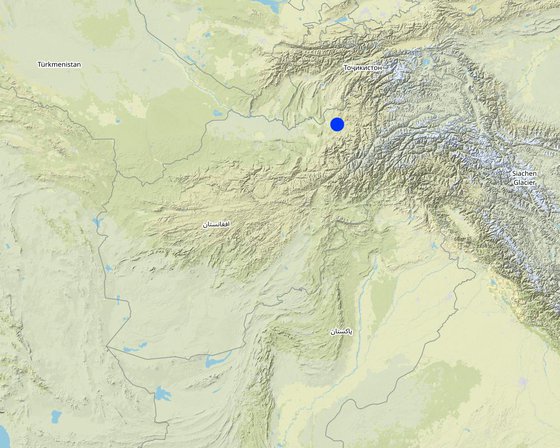
Location: Sari Joy, Jawaz Khana, Dashti Mirzai, Takhar Province, Rustaq District, Afghanistan
No. of Technology sites analysed: 10-100 sites
Spread of the Technology: evenly spread over an area (approx. 0.1-1 km2)
Date of implementation: less than 10 years ago (recently)
Type of introduction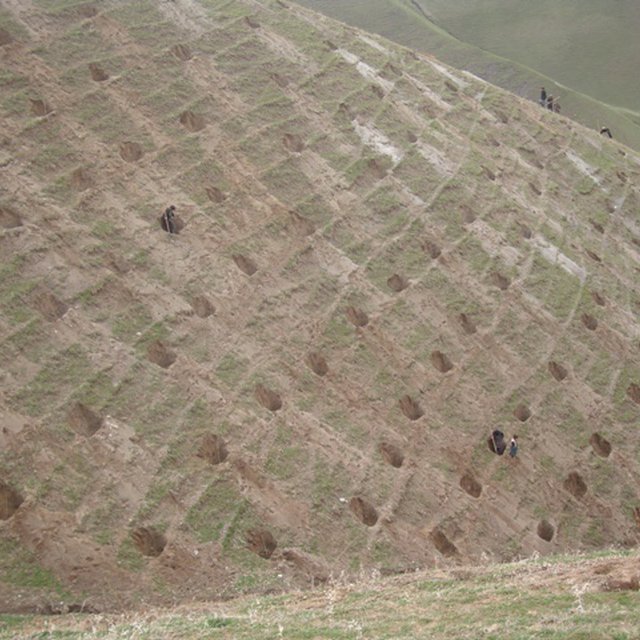
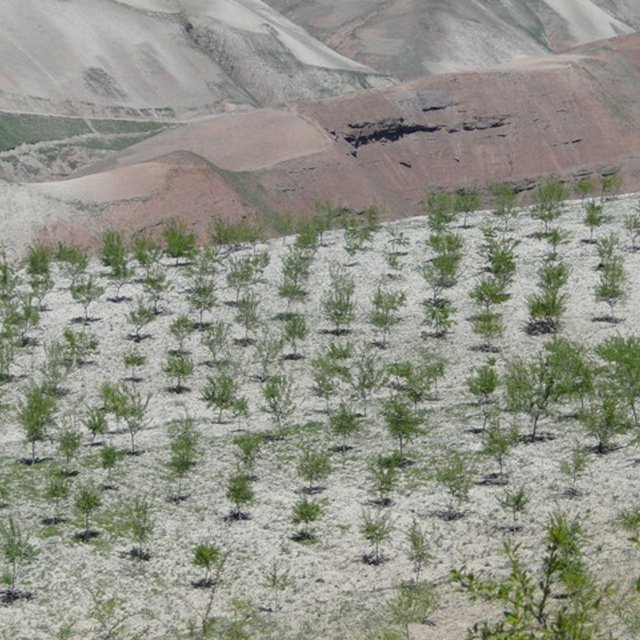
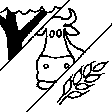






Technical specificationsThe establishment activities begin with selecting the area for reforestation. Most of the reforestation sites are on slopes above 6% steepness . A plot of 0.2 ha is divided into 4 m x 3 m sections. Planting pits of 50 cm x 30 cm are prepared for planting the trees. Each tree is placed in a pit and good soil is added to the roots. Most popular species used for reforestation are: Russian willow, acacia and mulberry. The newly planted tree is watered and the trunk is covered with a lime and water solution for protection and better growth.
|
|||||||||||
| Specify input | Unit | Quantity | Costs per Unit (US Dollars) | Total costs per input (US Dollars) | % of costs borne by land users |
| Labour | |||||
| Design of the forest | person-day | 15.0 | 5.3 | 79.5 | |
| Digging pits/holes for the trees | person-day | 22.0 | 5.3 | 116.6 | |
| Planting tree seedlings and watering | person-day | 15.0 | 5.3 | 79.5 | |
| Fertilizer and lime application | person-day | 8.0 | 5.3 | 42.4 | |
| Equipment | |||||
| Meter | piece | 1.0 | 2.25 | 2.25 | |
| Shovel | piece | 2.0 | 3.8 | 7.6 | |
| Pickaxe | piece | 1.0 | 2.25 | 2.25 | |
| Rope | meter | 500.0 | 0.07 | 35.0 | |
| Plant material | |||||
| Accacia seedlings | piece | 275.0 | 0.45 | 123.75 | |
| Russian willow seedlings | piece | 275.0 | 0.45 | 123.75 | |
| Mulberry seedlings | piece | 275.0 | 0.45 | 123.75 | |
| Fertilizers and biocides | |||||
| DAP | kg | 250.0 | 0.9 | 225.0 | |
| Lime | kg | 25.0 | 1.5 | 37.5 | |
| Total costs for establishment of the Technology | 998.85 | ||||
| Specify input | Unit | Quantity | Costs per Unit (US Dollars) | Total costs per input (US Dollars) | % of costs borne by land users |
| Labour | |||||
| Pest and disease control | person day | 7.5 | 5.3 | 39.75 | 100.0 |
| Replanting dead trees | person day | 7.5 | 5.3 | 39.75 | 100.0 |
| Irrigating the trees | person day | 10.0 | 5.3 | 53.0 | 100.0 |
| Pruning | person day | 5.0 | 5.3 | 26.5 | 100.0 |
| Total costs for maintenance of the Technology | 159.0 | ||||
Land users learned new methods of planting trees based on the local conditions.
The established forest is expected to become a reliable source for firewood, which will decrease the burden of women and children under 15 years, who spend long hours to collect firewood.